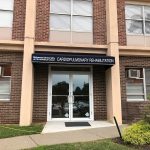No two individuals experience a stroke in the same way. Therefore, when it comes to stroke care, treatment models must be able to adapt to different patient needs. The best setting for rehabilitation varies from person to person; the setting that is appropriate for one may be insufficient for another. At Richmond University Medical Center, patients in Staten Island, New York, can access cutting-edge stroke treatment at our Comprehensive Rehabilitation Center. Here, we discuss the many stroke rehabilitation settings available to patients in recovery.
What Is a Stroke?
A stroke occurs when part of the brain stops receiving blood flow. This may happen due to a blood clot or other blockage (ischemic stroke), or it may happen when a blood vessel bursts and starts bleeding into the brain (hemorrhagic stroke). As a result, the brain no longer receives enough oxygen and nutrients to function. Brain cells start dying, causing progressively worse loss of function. Immediate medical attention is vital to prevent further damage.
All strokes are serious, but their long-term consequences can vary in severity. The type and degree of symptoms depend on the part of the brain affected and how much damage occurred before the patient received care. Some patients experience only minor issues that get better with time. Others, meanwhile, struggle with permanent and life-altering disabilities after their stroke.
What Is Stroke Rehabilitation?
Stroke rehabilitation is a treatment approach that aims to restore as much function and independence to the patient as possible. Treatment plans are personalized to address each patient’s unique symptoms. However, they typically involve a care team of specialists from multiple disciplines, including occupational therapists, physical therapists, and others. These specialists work together to help the patient relearn skills such as:
- Strength
- Range of motion
- Muscle control
- Mobility
- Self-care
- Communication
- Memory recall
- Problem solving
- Socialization
- Work skills
In some cases, patients can completely regain function – though this may take months or years to accomplish. Other individuals may instead focus on using assistive devices and compensation techniques to help them live with permanent disability. No matter the strategy, most patients can regain independence and enjoy a high quality of life after stroke.
When Does Stroke Rehabilitation Begin?
Generally, the earlier stroke rehabilitation starts, the better chance patients have of recovering important functions. Richmond University Medical Center, therefore, begins rehabilitation as soon as possible. It may start 24 to 48 hours after the stroke, depending on the patient’s condition. Physicians will closely monitor the patient’s recovery during this period to determine when they are ready to move into rehabilitation.
Where Should Stroke Rehabilitation Take Place?
Once the patient’s condition has stabilized, it is time to discuss a rehabilitation plan. There is no single best location for stroke rehabilitation, as the decision is a personal one. Many factors go into this decision, including the type and severity of the patient’s symptoms, their insurance coverage and financial situation, and any other medical needs. After discussing with their family and care team, patients may choose between the following treatment settings:
- Inpatient rehabilitation unit: The patient stays two to three weeks at an inpatient care unit while undergoing intensive rehabilitation. They will have direct, 24-hour access to nurses, therapists, and other healthcare professionals.
- Outpatient unit: The patient lives at home while attending appointments with physicians and therapists. Appointments may take a few hours and take place a few times each week, on a schedule that is personalized to the patient.
- Skilled nursing facility: The patient moves into a nursing facility for short- or long-term living. Some facilities specialize in rehabilitation, while others offer less-intensive therapy. Nurses are available 24/7 for medical care and assistance.
- Home care: The patient lives at home with the assistance of family members or a home care agency. This option offers greater comfort and flexibility, but may not include access to specialized equipment or skilled medical care.
Rehabilitation plans can change over the course of a patient’s recovery, and so can the setting. Many patients move from one location to another as their condition changes. For example, a person may start in an inpatient facility, then transition into outpatient care as they become more independent. Another might move from home into a skilled nursing facility for better access to care. Remaining flexible allows patients to receive the support they need, wherever they will find it best.
Learn More About Stroke Rehabilitation at Richmond University Medical Center
Stroke rehabilitation should take place at the location that is best for the patient and their unique needs. Richmond University Medical Center offers award-winning care in Staten Island, NY. Its knowledgeable physicians can help patients understand their options and make an informed decision. Contact us to learn more or to schedule an appointment at our comprehensive outpatient rehabilitation center




